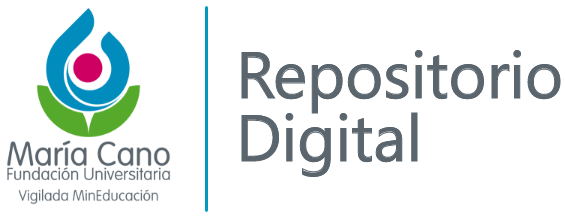Tratamiento de lumbalgia mecánica crónica en paciente adulto mayor mediante técnicas fisioterapéuticas específicas
Trabajo de grado - Pregrado
2019
Fundación Universitaria María Cano
Resumen: Se presenta el caso clínico de una paciente de 71 años de edad diagnosticada con artrosis de columna lumbar y osteopenia con consecuencia de lumbalgia crónica desde hace 2 años; ama de casa, realiza actividad física regularmente en grupo de gimnasia de la tercera edad, donde en ocasiones adopta posturas forzadas. Objetivo: Mejorar la calidad de vida de la paciente, aumentando su fuerza y funcionalidad, mediante un tratamiento que integra técnicas de kaltenborn, liberación miofascial, entrenamiento de la zona Core y estiramientos de las cadenas musculares. Metodología: Se realizó una intervención fisioterapéutica durante 3 días a la semana por 3 semanas, integrando técnicas específicas, con variaciones en la intensidad y la frecuencia de manera progresiva. Se realizó evaluación fisioterapéutica antes, durante y después del tratamiento. Se realizó un calentamiento previo a la sesión y al finalizar para promover una adecuada circulación. Hallazgos principales: La edad avanzada no es indicativa de carencia de funcionalidad en las AVD y AVC ni de ausencia de capacidades como la resistencia y la flexibilidad; La disposición y motivación adecuada de la usuaria 2 frente al tratamiento influyó de manera directa y positiva en los resultados; El dolor lumbar puede traer alteraciones en la activación neuromuscular de la zona Core como en el transverso del abdomen y los oblicuos internos; cuando hay alteraciones de la circulación es indicado realizar un calentamiento adecuado previo al desarrollo de la sesión, para prevenir calambres u otras complicaciones. Implicaciones prácticas: Se adoptó un método no invasivo sin riesgo para la salud de la paciente según la resolución 8430 de 1993, por la cual se establecen las normas científicas, técnicas y administrativas para la investigación en salud. Abstract: clinical trial at convenience based on a 71-year-old patient diagnosed with osteoarthritis of the lumbar spine and osteopenia with the consequence of chronic low back pain for 2 years; She is a housewife and regularly performs physical activities in a gymnastics group for older adults, where she sometimes adopts forced postures.Objective: To improve the quality of life of the patient, increasing strength and functionality, through a treatment that integrates kaltenborn techniques, myofascial induction therapy, muscle chain stretching and core area training. Methodology: A physiotherapeutic intervention was performed 3 days a week for 3 weeks, integrating specific techniques, with variations in intensity and frequency progressively. Physiotherapeutic evaluation was performed before, during and after the treatment. A warm-up was carried out prior to the session and at the end to promote adequate circulation. Main findings: Older age is not indicative of lack of functionality in BDA and DLA or lack of skills such as resistance and flexibility; The adequate disposition and motivation of the patient regards directly and positively to the treatment and its results; Low back pain can bring alterations in the neuromuscular activation of muscles of the Core area such as the transverse of the abdomen and the internal obliques; When there are alterations of the circulation it is indicated to carry out an adequate heating prior to the development of the session, to prevent cramps or other complications. Practical implications: A non-invasive method that poses no risk to the patient was adopted according to resolution 8430 of 1993, which establishes the scientific, technical and administrative standards for health research.
- AAF. Fisioterapia [963]
Descripción:
ArbelaezMichel_GarciaMaria_MontoyaAna_2019.pdf
Título: ArbelaezMichel_GarciaMaria_MontoyaAna_2019.pdf
Tamaño: 617.7Kb
 PDF
PDF
 LEER EN FLIP
LEER EN FLIP
Título: ArbelaezMichel_GarciaMaria_MontoyaAna_2019.pdf
Tamaño: 617.7Kb
 PDF
PDF
 LEER EN FLIP
LEER EN FLIP









